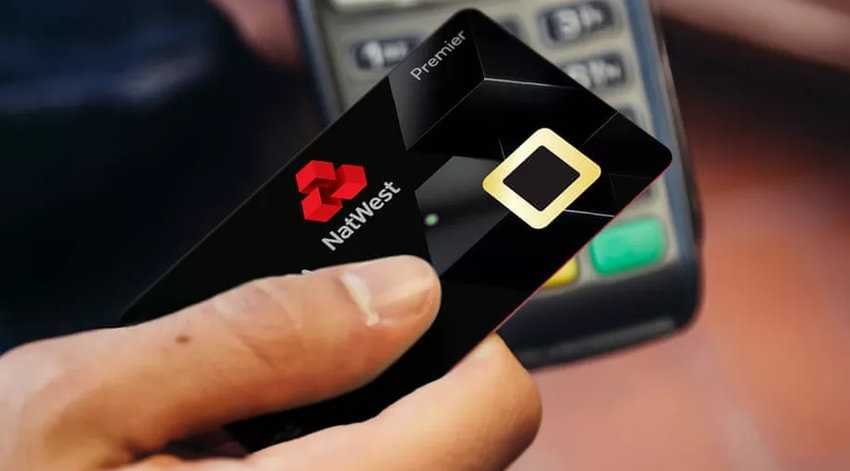The first debit card with built-in fingerprint reader is launched by the NatWest bank in the United Kingdom.

The British bank NatWest is testing the use of a new NFC payment card with a built-in fingerprint scanner. The test will include 200 customers, starting in mid-April and allowing participants to do NFC payments (Near Field Communication or otherwise "contactless payments") without having to enter a PIN or sign. The standard limit of EUR 30 applicable to contactless transactions in the United Kingdom (in Greece is 25 euro) will not apply when the fingerprint is used.
Currently, anyone can make one payment contactless in either the UK or Greece by touching their card to a terminal that should support contactless payments. As a result of this lack of security, a limit of €25-€30 is applied to such payments (depending on the country), where retailers require you to place your card on the card reader (POS) and enter a PIN for purchases greater than above limit (usually referred to as the “chip and PIN” method).
It seems that something will change in this method after the first serious tests with fingerprint cards are carried out. Fingerprint data is stored locally on the card, meaning there is no security information for a hacker to steal from the central base data of a bank. Of course it locks unlocks as there's always the risk that a determined enough thief could steal and mimic your fingerprint, but according to Natwest bank, it's far more secure than a PIN that someone could learn just by looking over the your shoulder as you type it.
Biometric control ID cards, which has already become a standard element of mobile phone payments with NFC, despite credit card tests conducted since 2015, they have failed to find a response to traditional bank cards. Gemalto, the company behind the card's biometric technology, conducted a trial in South Africa in 2017 as well as another last year with Italian bank Intesa Sanpaolo. The problem was that the cards required them users to visit their bank to enter the fingerprint, instead of doing it themselves, as is the case with mobile payment services.
The NatWest test does not overcome this problem. Participants should visit a branch of their bank. In a video released by the manufacturer Gemalto says he hopes future versions of the system will allow customers to use their own phone to record their fingerprints.
This hassle raises the question of why biometric cards are necessary when mobile phone payment functionality is included in so many modern smartphones with fingerprint readers and face scanners. However, since bank cards are provided free of charge to a qualifying bank account, this system can be made available to users who do not want or can not afford the purchase of a modern smartphone.





